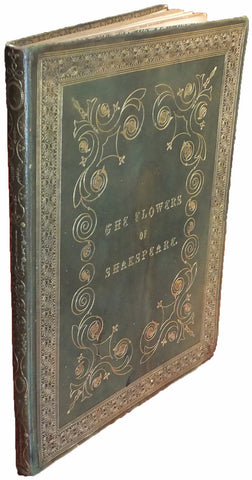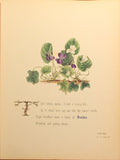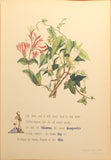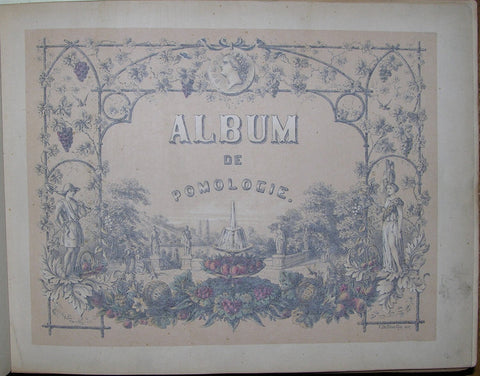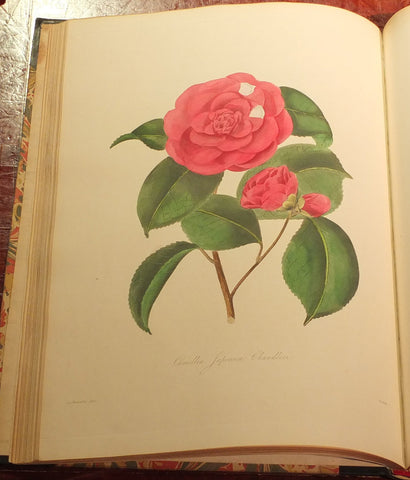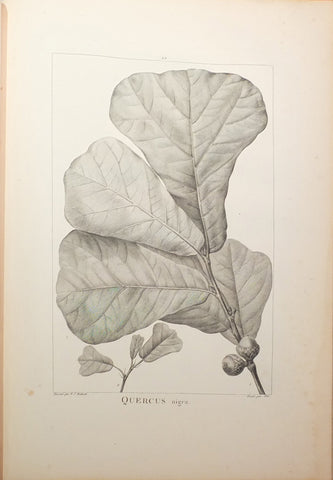Jane Elizabeth Giraud (1810-1868). The Flowers of Shakespeare
Jane Elizabeth Giraud (1810-1868)
The Flowers of Shakespeare
London: Day & Haghe, 1845
4to., (12 ¼ x 9 ⅜ inches). Fine lithographed decorative title page with original hand color, lithographed dedication page (a bit spotted). 29 hand-colored lithographed plates with original tissue guards (occasional spotting). Contemporary green morocco elaborately decorated and lettered in gilt, all edges gilt (extremities bumped).
First edition. 29 sumptuously hand-colored botanical lithographs accompanied by quotes from Shakespeare featuring the flower pictured. With lithographed dedication to the artist’s brother. The plates are: Briers, Furzes, Gorse, and Thorn (“The Tempest”); Violets (“Twelfth Night”); Roses of the Spring (“Twelfth Night”); Oak and Myrtle (“Measure for Measure”); Honeysuckles (“Much Ado About Nothing”); Crimson Rose (“Midsummer Night’s Dream”); Love-in-Idleness (“Midsummer Night’s Dream”); Wild Thyme, Oxlips, Violet, Woodbine, Musk-roses, and Eglantine (“Midsummer Night’s Dream”); Woodbine, Honeysuckle, Ivy, and Elm (“Midsummer Night’s Dream”); Daisies, Violets, Ladiesmocks, and Cuckoo-buds (“Love’s Labour’s Lost”); Green Holly (“As You Like It”); Hawthorns and Brambles (“As You Like It”); Lavender, Mints, Savory, Marjoram, and Marigold (“Winter’s Tale”); Daffodils, Violets, Primroses, Oxlips, Crown-imperial, Lilies, and Flower-de-lace (“The Winter’s Tale”); Carnations and Gilly flowers (“Winter’s Tale”); Oaks and Briers (“Timon of Athens”); Rosemary, Pansies, Fennel, Columbines, Rue, Daisy, and Violets (“Hamlet”); Willow, Crow flowers, Nettles, Daisies, and Long-purples (“Hamlet”); Primrose, Hare-bell, Eglantine, and Moss (“Cymbeline”); Small Flower (“Romeo and Juliet”); Samphire (“King Lear”); Lilies and Roses (“King John”); Strawberry, Nettle, Summer-grass (“King Henry V”); Cowslip Burnet, Clover, Docks, Thistles, Kecksies, and Burs (“King Henry V”); Red-rose and White [rose] (“King Henry VI”); Red Roses (“King Richard III”); and Moss, Mistletoe, and Yew (“Titus Andronicus”).
We Also Recommend

